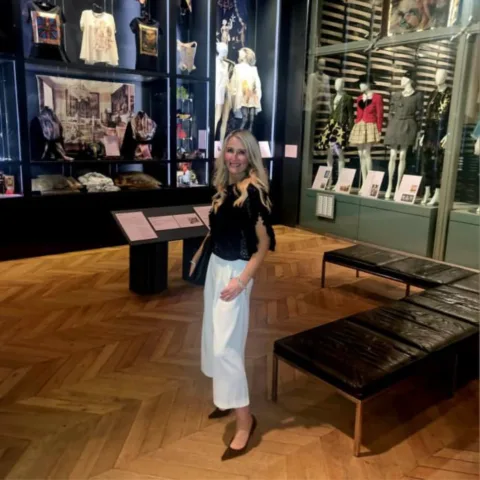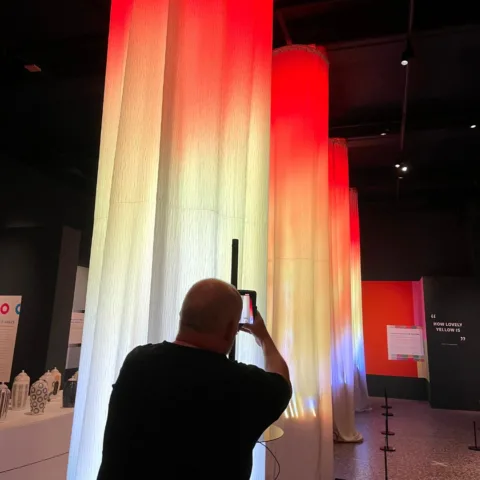The Bowes Museum Blog

‘No sex please, we’re just good friends!’
Madame de Pompadour is a famous figure in French history, partly on account of her charms and taste, partly because, as the mistress of Louis XV, she was reviled by the Victorians and the French Revolutionaries. Yet she occupied a weird position in French life, as the King’s ‘maitresse en titre’, a French term of English origin, or his official mistress, with apartments in the Royal Palace at Versailles, a social rival to the Queen, but equally expected to turn a blind eye to any infidelities to other women.
As royal mistress, her job was to entertain him in more ways than one, and one of the hobbies that she shared with him was a taste for porcelain, particularly that French porcelain that would enhance the prestige of the French court and crown. All kings in the 18th century wanted to own a porcelain factory; the material was called ‘white gold’ on account of its precious and valuable appearance and quality. The French King’s father-in-law owned the prestigious factory at Meissen in Germany, so it was not long before King Louis XV – or his mistress – decided to take over the existing factory in the Royal Castle at Vincennes, and move it to Sevres in 1756 to be closer to the Royal Palace at Versailles. The factory was renowned for making delicate ‘soft-paste’ porcelain, a material weaker than the ‘hard-paste’ porcelain of Meissen, but in many ways more beautiful, especially as coloured enamel decoration sank into its body. However, the thick covering of glass or ‘glaze’ in finished items meant that it was not suitable for fine figure modelling. The French got round this by leaving it unglazed, with the appearance of white marble sculpture, and since many of the models were designed by the court sculptors, that is effectively exactly what they are, but on a very small scale.
This aspect of porcelain production is explored in the exhibition ‘Dangerous Liaisons’ in Frankfurt, which looks at the image of love in France in the 18th century, both two and three dimensional. The ‘great’ names of Boucher and Fragonard are well-represented, but you can also see marble sculptures, and also many of the fine porcelain figures of nymphs, shepherds and shepherdesses that were produced in porcelain in France and Germany as part of the court culture of the time. Of these, the French stand out by their lack of coloured enamelled decoration, giving them the appearance of small scale figures of marble.

Figure of Madame de Pompadour as ‘Friendship’, 1755. Vincennes ‘biscuit’ (unfired) porcelain, 1755
This figure is one of nineteen that Madame de Pompadour commissioned from the factory to commemorate her transition from the King’s lover to his best friend in the mid 1750s. This may seem odd to us today, but it would have been a difficult time for Madame de Pompadour herself, and the change would have been noticed by gossips at court. So she decided to make a virtue of necessity by commissioning from the sculptor Falconet small statuettes of herself as ‘Friendship’, which were presumably given away by her as New Year’s gifts in 1756. Only four are known today; this example has a serious firing crack through the centre, but nevertheless represents the factory at the peak of its production just before its move to Sevres in the same year.

The Bowes Museum acquired this as an outstanding ceramic, and a portrait of a major figure, as well as a fine piece of sculpture. Acquired with the aid of the V & A Purchase Grant Fund and the Friends of the Bowes Museum, Cer.1997.54
She is shown standing in classical draperies, facing front, resting on a column on her left, on which rests her right hand holding a heart. The column is garlanded with flowers and a tree stump supports her back. The model (L’Amitie au Coeur) commemorates Madame Pompadour’s transition from Louis XV’s mistress to friend in 1750, the subject also of a statue by J. B. Pigalle in the Louvre (RF3026, Jean-Rene Gaborit “Jean-Bapiste Pigalle (1714-1785) Sculptures du Musee du Louvre”, Paris, 1985, p.56). It was modelled by Etienne-Maurice Falconet (1716-1791) (George Levitine “The Sculptures of Falconet,” 1972, figs 94-95). It is based on an engraving by Louis-Marie Bonnet (1736-1793) after a drawing by Boucher as “Offrante sincere” before 1767 (Pierette Jean-Richard “L’Oeuvre Grave de Francois Boucher”, Paris 1978,p.317.
MARK: Incised ‘L’ on the base, on the left.

Nineteen of these figures were produced in 1755 (T. Preaud, “La Porcelaine de Vincennes”, 1991, no.40). Three others are known today (Musee National de Ceramiques, Sevres (MNC16057); Wadsworth Atheneum, Hertford (with a porcelain stand, perhaps for her brother, the Marquis de Marigny); and a private collection, Paris (sold Firestone collection, Christies New York, 21-22 March 1991, lot.120).
The figure of Madame de Pompadour was on loan to the Liebieghaus Museum in Frankfurt featuring in ‘Dangerous Liaisons: The Art of the French Rococo’ which runned until 28th March 2016.
By Dr Howard Coutts, Curator of Ceramics







